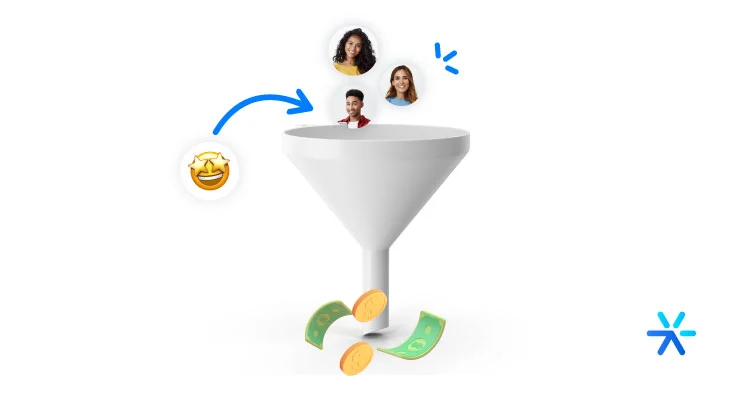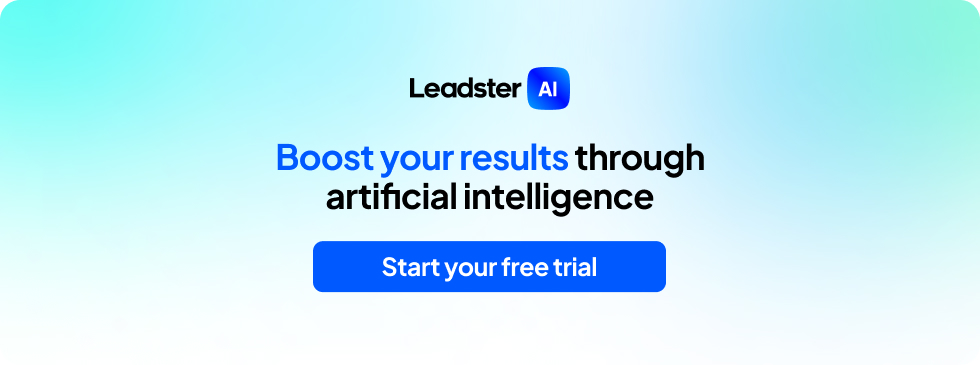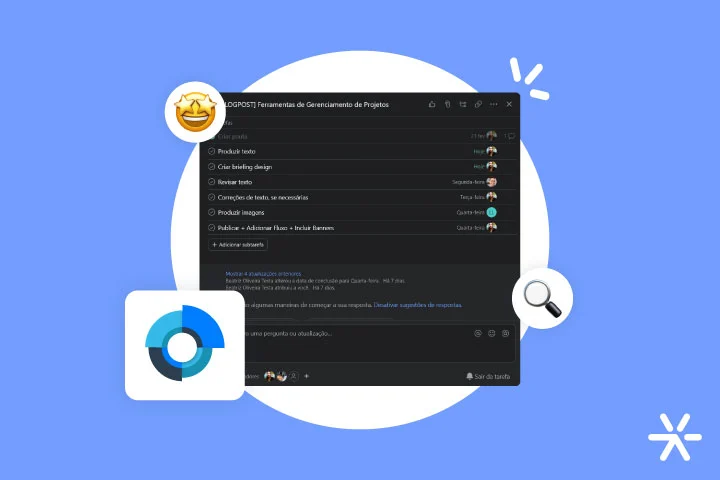Financial Marketing: the Do’s and Dont’s
Financial Marketing is one of the most complex types of marketing to work with.
This is because, as we understand it, marketing is much more than creating campaigns and driving sales.
In fact, thinking about financial marketing means considering all points of contact between a company and its customers, and being present at every one of them.
And more than that: with the technological revolution in banks and the emergence of new fintechs, the entire market is changing.
Today, convenience is a crucial point to consider, and ease of communication, from the first contact to the last, is imperative.
All of this is marketing, and it’s all important. Today we’re going to talk about these aspects, understand which strategies are necessary depending on the size of your business, and delve into specific issues of financial marketing.
Which companies need financial marketing?

First of all, we need to define the market, because the type of company often determines which strategies are most interesting for financial marketing.
For example: the strategies used by banks are different from those used by insurance companies.
And even among insurance companies, strategies can vary between those that only work with insurance and those that offer other services as well, such as consortiums.
We can understand financial marketing in several ways. In this article, we will deal with three main categories:
- Low impact: smaller companies in the financial segment, with a small client portfolio and often offering very close and personalized service, in some cases even individualized. Example: small accounting firms;
- Medium impact: slightly larger companies that already have a good client portfolio, operate nationally, and offer broader solutions. For example: insurance brokerages;
- High impact: much larger companies with a highly developed client portfolio, nationwide service, and offering additional resources (account creation, cards, apps). Example: banks.
Throughout the article, we will discuss strategies that will be present in one of these categories, in some cases, or in all of them.
That’s why it’s good to discuss these categories before the more practical part of the article really begins: to understand their limitations and characteristics now, and later it will be easier to relate everything.
Let’s delve into each of these categories. Remember: this is a marketing categorization, aimed at marketing purposes, okay?
If you want to know more about business intelligence, it’s worth reading our article on the subject: it delves deeper into business matters.
Shall we?
Low impact
These financial companies are smaller, usually serving the region they are in, and in some cases, they even accept clients from all over Brazil.
The market impact that such a company has is low, but at the same time, combined, they make up the majority of the financial segment in Brazil today.
We can consider low-impact companies in the financial segment as:
- Accounting firms;
- Document processors;
- Individual accountants providing services to small businesses;
- Individual financial consultants;
- Individual investment consultants;
- Notary services companies.
Among others. These companies have a low impact because they do not manage a very large client portfolio, and they are focused on offering services, often not even dealing directly with money.
Now let’s better understand the medium impact segment:
Medium impact
Here we are talking about slightly larger companies that usually manage a more developed client portfolio and already carry out financial operations.
From a marketing perspective, these companies have the upper hand: they have resources to move, while at the same time, the investment in marketing doesn’t face many obstacles, justifications, and compliance issues.
Look at this: J.P. Morgan is one of the largest banks in Brazil. Every month it handles millions of its clients’ money and invests millions more in marketing.
At the same time, the freedom Itaú has is very restricted. You will rarely see Itaú campaigns using Social Ads, for example.
And even when they do, there are a number of limitations related to their art direction, concepts addressed, what can be said and what cannot, etc.
Medium-impact companies do not have this problem, while at the same time, they have resources that low-impact companies do not have. It’s a sweet spot.
We consider medium-impact companies to be:
- Loan agencies;
- Insurance brokerages;
- Regional banks;
- Currency exchange offices;
- Business consulting firms;
- Consulting agencies in general.
High impact
As you can imagine, our high-impact segmentation is primarily dealing with large banks and financial agencies.
Traditional banks, digital banks, and fintechs are the main examples of high impact according to our classification.
The issue is that fintechs themselves have quite variable operations. But due to their inherently national nature, it’s better to include them here.
You will find, for example, fintechs with a small client portfolio. But at the same time, their marketing strategies will never be regional: they will always seek clients throughout the country.
In the case of banks, we can consider those with a presence in several Brazilian states — in most cases, in all of them — in addition to multiple branches in the cities where they operate as high impact.

The Five Fundamental Strategies for Financial Marketing

Financial marketing has some very urgent particularities. These are present in other segments, but not with as much intensity.
For example: in financial marketing, customer service is a very urgent necessity from the moment the first client is acquired.
Everything in the financial world requires a lot of communication, and even with online content, there will still be cases where only customer support can resolve the issue.
And that’s just one example. There are several other points that, although shared by various segments, still hold extra relevance for financial marketing.
Let’s discuss them all now:
Inbound Marketing in the World of Financial Marketing
If you analyze Inbound Marketing strategies, you’ll notice that it can serve as a great framework capable of accommodating various segments without many changes.
In all cases, it’s necessary to create a Marketing and Sales Funnel, create Nurturing Flows, produce content, qualify leads, and sell.
In financial marketing, the work is similar, but it comes with very specific characteristics of the segment. Some of them include:
- Financial marketing deals with people with little specific knowledge but many complex needs;
- The Marketing Funnel in financial marketing is naturally longer, with the transition time between stages being greater than in other segments;
- Contracts closed in financial marketing have long durability and are therefore extremely valuable;
- The audience for financial marketing is quite broad, across the three levels we analyzed earlier;
- The segmentation of this audience won’t be very niche, as even the most specific points of financial marketing, when expanded to cover all of Brazil, will still include hundreds of thousands of people;
Among others specific to the company’s operations. Financial Inbound Marketing requires a longer preparation time, as the work is more complex.
Moreover, this Inbound Marketing is one of those most influenced by the Dark Funnel.
This Hidden Funnel refers to actions taken by customers, or mentions of your brand, that are completely out of your control.
Financial institutions, banks, insurance companies, and all the companies in the financial segment with a good client base are the most likely victims of the Hidden Funnel.
Much is said about them outside their communication channels. Just ask someone, “what’s your bank?” to receive either a recommendation or a complaint about the brand.
Because of this, we need to talk about another point: the experience of customers and potential customers. Let’s go:
Focus on Experience
This is probably a controversial opinion, but the financial segment is one of the few in the market where Experience — with a capital E — is as or even more important than “traditional” marketing strategies focused on generating leads and sales.
Of course, these strategies, from the perspective of digital marketing, also require that the Experience be good to improve conversion.
But in financial marketing, experience takes everything into account:
- The ease of the account opening process;
- The charging of abusive fees or interest;
- The ease of communication with the brand to request support;
- The use of an app;
- A dedicated manager;
Among several other points not necessarily related to campaigns, conversion, etc., but to the overall experience with the brand.
This focus on Experience complements the Dark Funnel situation mentioned in the previous item.
Since there are many “dark” points in the Customer Journey, it’s necessary to ensure that the quality of your service stands out.
In other words, since they will talk about your brand, do everything possible to make them speak well of it!
But speaking of the Customer Journey:
The Customer Journey is More Complex and Needs to Be Fully Mapped
The Customer Journey is a very interesting task because it can be as simple or complex as you need it to be.
For example: a simple Customer Journey, for an online shoe brand, doesn’t need very specific points.
The person recognizes the problem (the need for more pairs), considers the solution (which models do I like the most?), and decides to purchase (which are the most reliable sites to buy my sneakers?).
In these retail cases, the Customer Journey is much simpler to create. But when we enter the realm of financial marketing, it becomes more complicated.
First, it’s necessary to understand the potential customer’s feelings at all stages. These feelings will guide your copywriting efforts.
What are their concerns? What points can you address with content regarding this? What types of ads can you create?
Next, it’s necessary to understand what motivates the customer. And create both offers and content related to that.
This needs to be done at every stage of the Customer Journey. What makes it different from most other segments is that there is a vast amount of topics on each of the discoveries you make.
And all these topics need to be considered. All doubts answered, across all possible channels.
And speaking of content:
What Are the Best Content Channels for Financial Marketing?
All content channels are important for financial marketing.
As we saw in industry statistics, financial marketing has most of its site visits coming from organic search,
But at the same time, most of its conversions happen through Meta Ads.
This alone shows that the channels for financial marketing are very diverse. But why does this happen?
Well, this is a natural trend for any type of content: according to the Long Tail theory, the more diversified your product portfolio, the more results you achieve.
But at the same time, this also speaks to how financial marketing is a broad, and in many cases, social task.
Financial topics are important to everyone over 18, simply. It’s a social issue.
Because of this, people will seek out and consume financial content on any channel. They already did it on television, and before that, on the radio. Even earlier: in magazines and books.
So, all channels are important for financial marketing. But to highlight some key ones:
- Content production on websites;
- On social media;
- Ad production for all platforms;
- Content production for YouTube;
- Creation of rich and practical materials;
This last point is worth expanding on. Come with me:
How to Take Advantage of Site Visits in Financial Marketing
Your focus needs to be on lead conversion.
This is the main concern of everyone working with marketing of any kind, but it’s even more necessary in financial marketing.
Lead generation will ensure that you always have the opportunity to approach people who align with what you offer.
This lead generation is easier when done with a good chatbot for lead generation.
These chatbots work in a very practical and simple way: you install them, create your flows — including personalized flows for each page, if you prefer — and that’s it.
With this, you will have a chatbot installed, asking questions and ready to deliver more personalized content offers on each page of your site.
This, of course, with the power of ChatGPT by your side, helping you build your flows more easily.
Discover the power of AI chatbots today by clicking the link. Thank you very much for reading, and we’ll see you in the next article.







